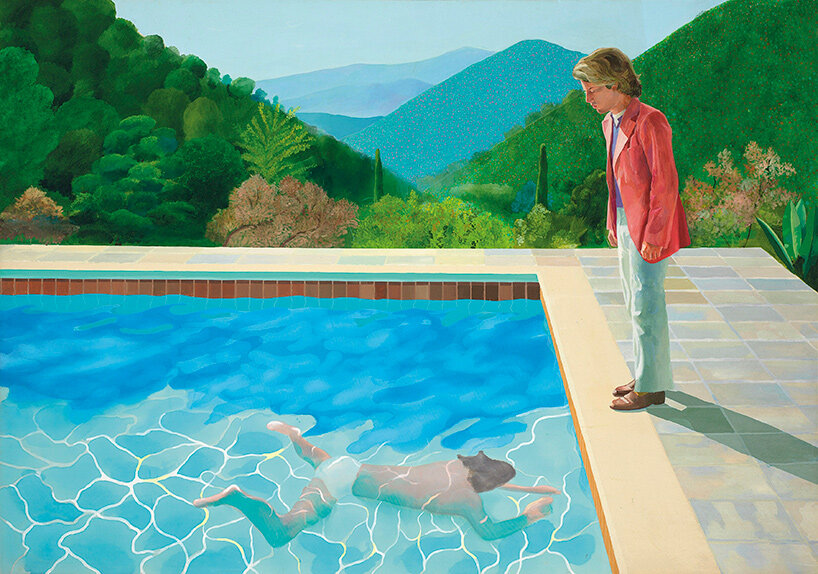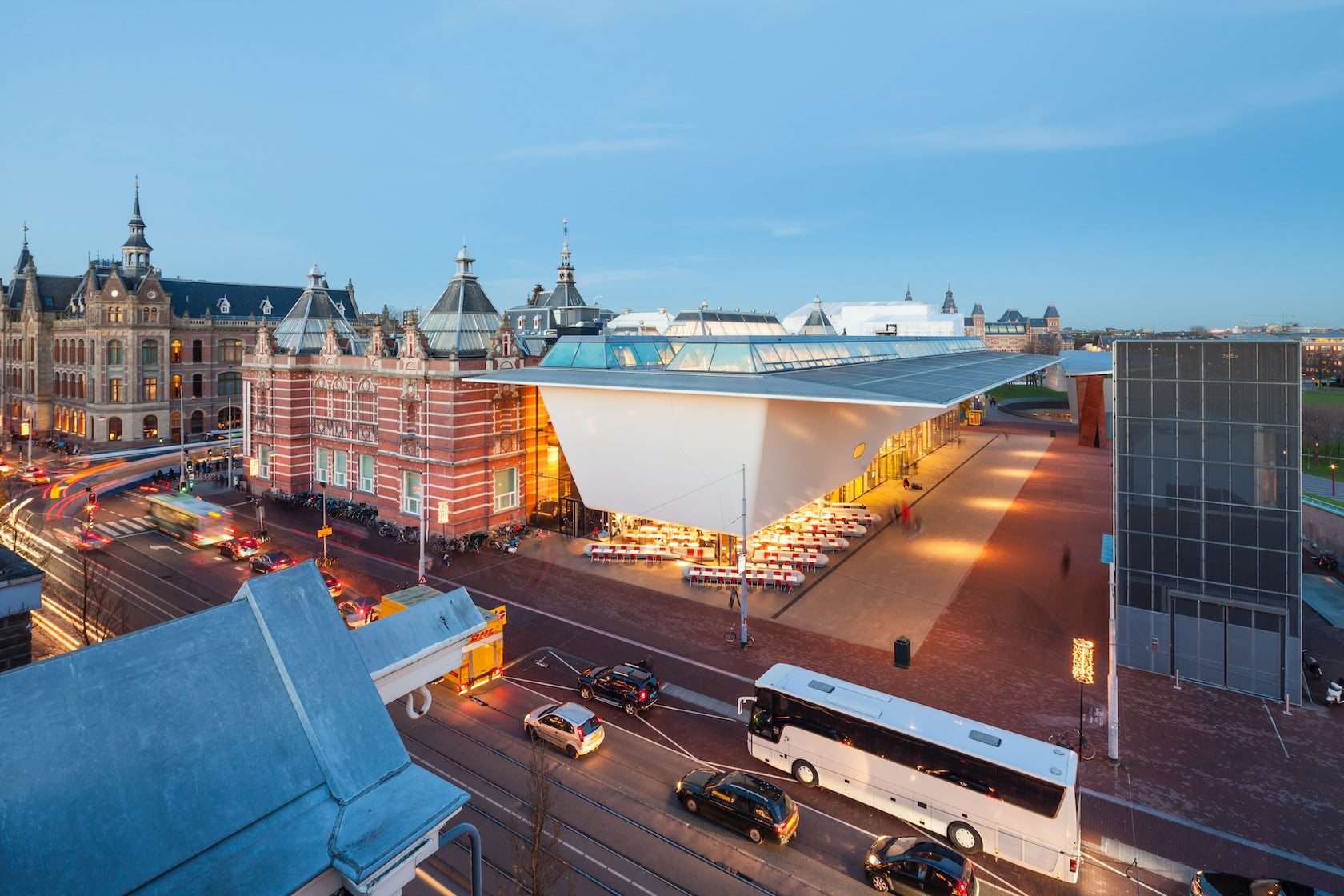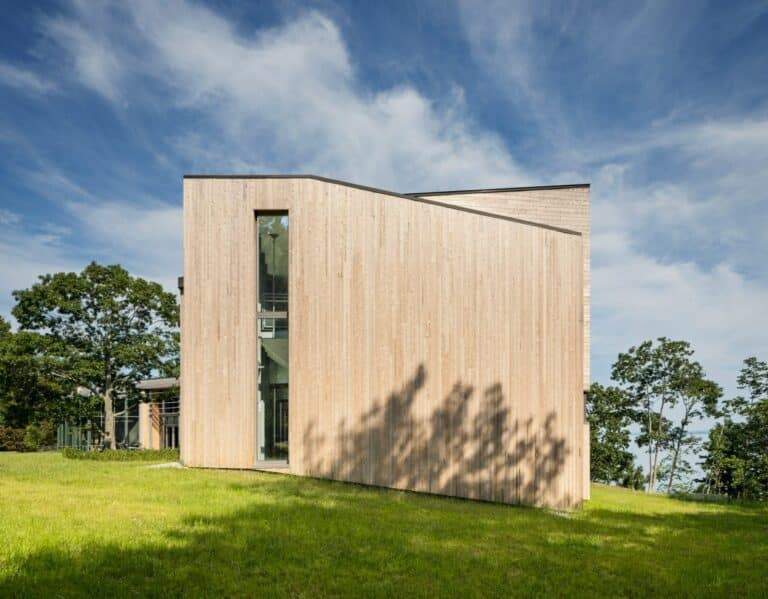David Hockney Under Glass Sails: A Dialogue Between Art and Architecture
Next week, the French capital, Paris, will witness a remarkable artistic event. The Louis Vuitton Foundation hosts a major exhibition by British artist David Hockney, shedding light on issues of censorship and artistic freedom.
What distinguishes this exhibition is not only its visual richness but also the location that houses it. The building was designed by the famous architect Frank Gehry, whose structure is inspired by transparent sails. These sails seem to float in the air above the Bois de Boulogne forest.
A Fusion of Architectural and Artistic Vision
This encounter between Hockney’s art and Gehry’s architecture is not merely a visual marriage but can be considered a contemporary artistic dialogue. While the museum was designed to embody the movement of the wind and sails, Hockney injects his artistic vision. His work spans seven decades through more than 400 works of art that will be displayed.
An Unconventional Exhibition Experience
It is noteworthy that Hockney himself participated in organizing the exhibition. This gives the experience a deeper personal touch. This is not just a showcase of his works, but an attempt to present a visual reflection on the evolution of his thoughts and style. This all starts from an artistic location that reflects the modernity of the architecture and the spirit of renewal. His artistic freedom will be on full display in Paris.
Towards a Deeper Understanding of Modern Art
The exhibition will run from April 9th to August 31st. It offers a chance to delve into an artistic experience that blends painting, experimentation, light, and space. It is also an opportunity to reflect on how art interacts with architectural contexts. One can see how a space can change the way an artwork is received.
Censorship Targets Creativity: David Hockney’s Cigarette Sparks Controversy in Paris
In a scene reflecting the growing tension between freedom of expression and public space regulations, the removal of promotional posters for David Hockney’s exhibition from the Paris Metro has ignited a broad debate. This debate touches on the limits of artistic freedom and censorship, especially in such an influential city as Paris.
🔗 Read also:
A Promotional Image… But Forbidden
The posters, which were meant to be displayed in metro stations, were not banned due to shocking or daring artistic content. Instead, Hockney himself appeared in the image holding a cigarette. The image showed the artist sitting next to a new painting titled “Playing within a Play within a Play, and I Have a Cigarette”. This piece explores self-reflection and representation. However, the mere presence of the cigarette was enough to spark objections.
French Law and Advertising Censorship
According to Paris’s public transportation authority, the use of this image in advertising violated French advertising laws. These laws prohibit any public promotion of smoking, even in an artistic or personal context. The irony here is that the photograph was banned, while the painting itself—featuring the cigarette—was allowed to be displayed. This raises questions about the rationale behind this distinction.
The Artist Responds: Individual Freedom vs. Strict Regulations
David Hockney, aged 87, didn’t hesitate to voice his disapproval of the decision. He called it “complete madness” and stressed that smoking for him is not just a habit but a symbol of personal freedom. This freedom he has always defended against censorship.
The exhibition’s artistic coordinator, Sir Norman Rosenthal, argued that the decision goes beyond comprehension. He stated it represents an undermining of the spirit of Paris. Paris has long been a hub for artistic and intellectual revolutions, as well as a refuge for freedom of expression.

David Hockney in Paris: Art as a Tool for Expressing Societal Tensions
It is fitting that David Hockney’s exhibition in Paris begins with a 1955 portrait of his father, a man who rejected smoking. This coincides with the controversy surrounding Hockney’s own image with a cigarette. This photograph promotes an idea that may be old-fashioned or controversial. It raises questions about the relationship between art and society, and its limitations in the face of censorship.
The Tension Between Freedom and Restrictions
What makes this exhibition stand out is not only its chronological display of Hockney’s artistic evolution but also its function as a cultural statement. It reflects the ongoing tension between freedom and control, and between tradition and progress. Through his works, Hockney challenges mainstream thinking. This deepens our understanding of the impact art has on the development of societies and highlights issues of artistic freedom and censorship.
Art as a Space for Rebellion and Innovation
This exhibition, which showcases over 400 works of art, serves as a reminder that art remains the only space where rebellion can truly thrive. Despite his age, Hockney continues to paint daily. He proves that creativity knows no age or restriction. For him, art is a means of expressing individuality in the face of social pressures and censorship. Being in Paris symbolizes his ongoing fight for artistic freedom.






